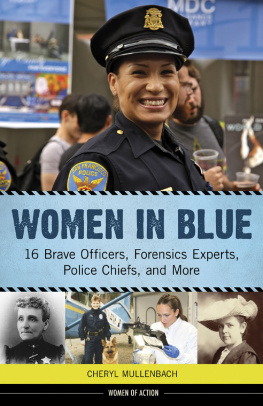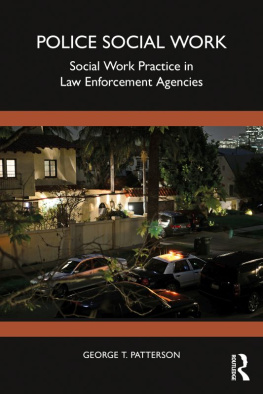
Imagine sitting in your classroom whenthe fire alarm goes off. Only this time, it's not a drill. Everyone runs. But notMelissa Carter and her dog, Josey. When the alarm went off at Union CountyHigh School, they raced towards the cause of the alarm. Once they found thesource, they flew through five miles of creeks, woods, and thickets thatsurround the campus, chasing down the criminals.


Melissa is a K-9 handler for the UnionCounty Sheriff's Department in Tennessee, so it was her duty to catch thecriminaland she did. H owever, until recently,Melissa would not have been allowed to chase him down. In fact, if it hadn'tbeen for a minister from Kansas named Alice Wells, female careers in lawenforcement may never have happened at all.
The path to women's equality in law en forcement has been a long and hard one. Though the firstwomen joined the police force in 1910, it took almost 100 more years for themto reach equality. The first women in the police force were not like the womenwe see on TV and in the movies. They weren 't evenallowed to carry guns or make arrests.
The first woman police officer, AliceWells, was sworn into the Los Angeles Police Department on September 12,1910. She was given a telephone call box, a police rule book, and the"Policewoman's Badge No. 1." She was notallowed to join her male counterparts in their normal duties. Instead, shesupervised skating rinks and dance halls. While her job was not very similar towhat policewomen do today, it was nonetheless an important step for women.Thanks to her dedication and hard work, by 1915, 16other cities had added policewomen to their staff. During her career, Wellstravelled throughout the United States and Canada promoting the use of femaleofficers, and fighting for their right to be a regular member o f the police force. She was an influential anddriving force in getting policewomen the equality they have today.
Although Wells paved the way for women in the police force, it wasn't until 1972, morethan 60 years later, that women entered the other major branch of law enforcement: the Federal Bureau ofInvestigation.

The first two women to enter the FBIwere an unusual duo that could not have been more different.Joanne Pierce Misko was formerly a nun in New York,while Susan Roley Malone was a member of the United States Marines. However,their unique backgrounds were just what they needed to succeed.

When Misko and Mal one entered the FBI Academy in Quantico, Virginia, theywere given no special treatment. They were expected to meet the same physicaland academic standards as the men. Misko and Malone relied on each other andworked hard for their success. When the other specialagent recruits were taking the night off, Misko was helping Malone study, orMalone was helping Misko in the gym. And their hard work paid off.

In October of 1972, Misko and Malo ne became the first female special agents in the FBI.
During their time in Quantico and theircareers as agents, the FBI never made a big deal about Misko's and Malone'ssuccess. According to Malone, "They wanted us to be like any otheragent." While this may seem unfair, it wasactually beneficial for women. Because women were expected to meet the samestandards as men, they, unlike the policewomen, reached equality almostovernight. However, women might never have been given the opportunity to provetheir worth in the FBI if women like Malone and Miskohadn't made it possible. Thanks to the work of a minister, a nun, and a marine,many women, such as Jan Fedarcyk and Jennifer Fulford, dedicate their lives tolaw enforcement careers.


Law enforcement personnel are people who ensure that othersfollow the law. The most common type of law enforcement offi cers are agents. An agent is a detective or investigatorfor a state, county, or federal government. They are the ones who are on thestreets leading investigations and keeping our cities safe. One such agent isDetective Jennifer Fulford-Salvano of the Or angeCounty, Florida Sheriff's Department.
Jennifer Fulford always wanted to be a cop. Her mom was in law enforcement, and growing up she had always been fascinatedwith TV cop shows. So, after graduating from theUniversity of South Florida, Jennifer joined the Orange County Sheriff'sOffice.

Deputy Jennifer Fulford spent her firstfew years as a policewoman as a general agent. She spent h er days doing patrols and running investigations. It was ona routine day like this, after only three years as a policewoman, that her lifechanged.
In 2004, Jennifer and three otherpolicemen on patrol responded to an emergency callfrom an eight-year-old boy. He told the dispatcher that there were men withguns in his house, and that they had trapped him and his two sisters in theirmini-van in the garage. When Fulford got to the scene, she quicklyentered the ga rage to get the children to safety.

However, before she could get to them,two men emerged from the house firing their weapons right at Fulford. Trapped, and desperate to protect the kids, Fulford fired back. She was struck by 10 bullets, including one that disabledher shooting hand. However, this did not render Fulford helpless. Because shehad been through the difficult police training process, she knew just what todo. And she did it.





















